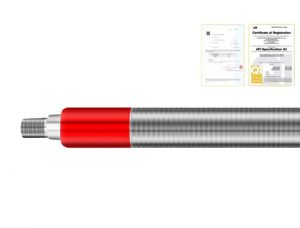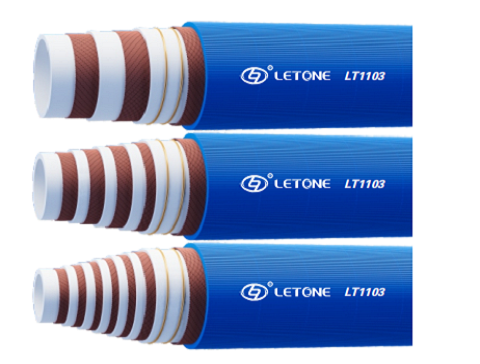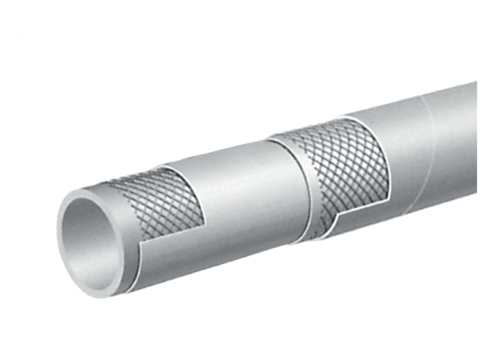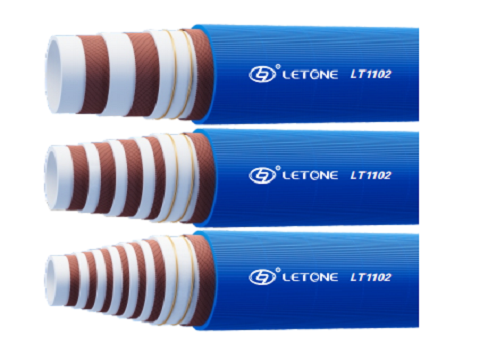The specifications and models of acid fracturing hoses are used to transport various fluids into and out of the fracturing site. These include drilling fluid, crude oil, or hydrochloric acid.
The foam based fracturing fluid can be customized according to the conditions of each reservoir through environmental chemical additives. They can also be adjusted for thermal changes that affect their rheological properties.
How to choose acid pressure hose
It is crucial to choose the appropriate acid fracturing hose for your oil well. These hoses need to be able to withstand high temperatures and pressures in harsh environments with acidic gases. To reduce the risk of failure, they must also be flexible and have low leakage paths. Choosing the correct acid fracturing hose will ensure safe and successful operation.
Acid fracturing nozzles are usually made of polyurethane and must be rated for the acidic conditions in the well. The nozzle must also be able to withstand the vibration and acceleration of the pump as well as the high temperature and high pressure conditions in the acid gas environment. The hose must be able to withstand high temperatures and pressures, and be resistant to wear.
The acid induced thermal conductivity chemical fracturing method uses any type of low pH acid to etch Carbonate rock and generate fracture conductivity. This treatment activates various natural fractures within the reservoir, increasing daily and cumulative production. This method also increases the flow capacity of fractures, reduces fluid loss, and improves the performance of the well. It can also minimize the impact of shutdown. The fracturing process uses the Net Present Value (NPV) module to calculate the economically optimal fracturing treatment. This module optimizes the geometry of fractures using information about reservoir fluids and proppants.
Acid fracturing hose connector
High quality acid fracturing hoses are designed with end connections to resist damage caused by rough abrasive materials or surfaces. It should also be able to withstand high voltage. The hose should also be easy to clean and corrosion-resistant. It should be lightweight and short enough to prevent unnecessary rework. These hoses can be used to deliver water-based, oil-based, acid based and foam fracturing fluids under high pressure in acid, sand and Fracking projects.
The fluid efficiency of acid fracturing is important because it affects the length of fractures and the conductivity of the wellbore. Higher fluid efficiency means less acid leakage and better performance. The fluid efficiency should be between 40% and 60%.
The etching morphology of cracks is determined by the reaction rate of the reservoir and the composition of dolomite. The etching form of dolomite is different from calcite because the slow acid reaction is slow and the fracture wall is not easy to form differential fingering. This etching morphology reduces acid consumption near the wellbore, improves the length of etching cracks and their conductivity. The crack sealing ability of temporary sealing materials is also crucial. The sealing pressure of fibers is relatively low, but adding 10/40 mesh particles to the fibers can improve crack sealing.
 Production standard for acid fracturing hose
In recent years, the production standards for acid pressure rubber pipes have become increasingly strict. The industry must meet multiple performance standards, including flow rate, pressure, installation/disassembly time, leakage path, and cost of ownership. These requirements are based on research, testing, and on-site experience. These tests were conducted under controlled conditions and may include tests under simulated fracture conditions. Compare test results with production goals and develop recommended hose designs.
A model has been developed to accurately predict the acid penetration distance. It can also combine the effects of rock type, acid injection rate, and formation temperature. This model helps to optimize acid treatment and maximize yield increase.
The optimization of acid system in Carbonate rock reservoir requires high carbonate solubility and deep acid penetration to achieve long etching length. It is also important to fully inhibit acid under downhole conditions. In the development process of the acid system, a mixture containing 7% HCl and 11% formic acid was developed. Remove acetic acid from the mixture as it can cause incomplete inhibition under downhole conditions. This system has performed well in the Shuangyu gas reservoir, with an average increase of 35% in production capacity.
Production standard for acid fracturing hose
In recent years, the production standards for acid pressure rubber pipes have become increasingly strict. The industry must meet multiple performance standards, including flow rate, pressure, installation/disassembly time, leakage path, and cost of ownership. These requirements are based on research, testing, and on-site experience. These tests were conducted under controlled conditions and may include tests under simulated fracture conditions. Compare test results with production goals and develop recommended hose designs.
A model has been developed to accurately predict the acid penetration distance. It can also combine the effects of rock type, acid injection rate, and formation temperature. This model helps to optimize acid treatment and maximize yield increase.
The optimization of acid system in Carbonate rock reservoir requires high carbonate solubility and deep acid penetration to achieve long etching length. It is also important to fully inhibit acid under downhole conditions. In the development process of the acid system, a mixture containing 7% HCl and 11% formic acid was developed. Remove acetic acid from the mixture as it can cause incomplete inhibition under downhole conditions. This system has performed well in the Shuangyu gas reservoir, with an average increase of 35% in production capacity.







